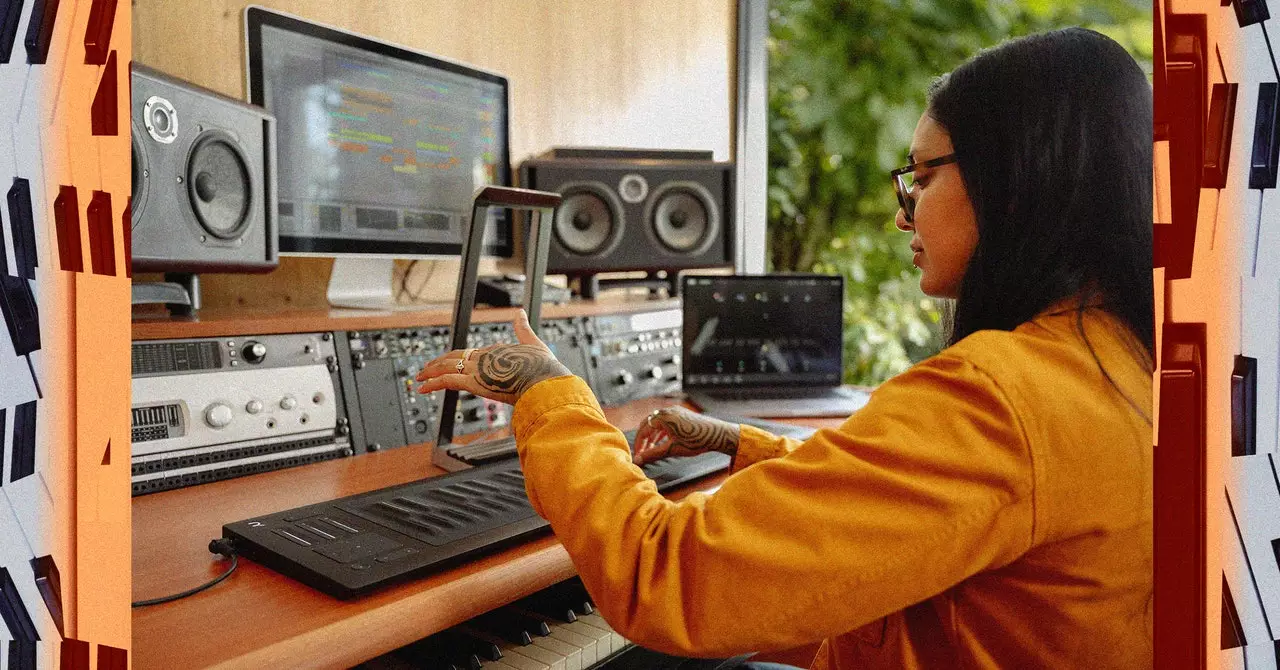In the evolving landscape of music education, the traditional methods often face significant challenges. As numerous aspiring pianists can attest, the journey to mastering a musical instrument is often fraught with obstacles. Samuel Lamb, a visionary in the realm of music technology, describes his struggles with an educational tool named Lumi. He notes a common frustration: despite the tool’s potential, users were not progressing at the pace that one would hope for in their musical journey. This highlights an overarching problem within music education that demands innovation. Traditional learning methods can often lack immediacy and personalization, which are essential for effective skill acquisition.
Roli’s new product, the Airwave, aims to redefine the learning experience by immersing players directly in the lesson. By incorporating artificial intelligence (AI) and advanced technology, the Airwave sets the stage for a more interactive form of learning. Unlike its predecessor, which provided a more passive learning environment, the Airwave promotes active engagement between the learner and the instrument. Leveraging the power of AI, particularly OpenAI’s ChatGPT, the device allows users to interact vocally with the lessons. This feature eliminates the need to search through countless online tutorials, thereby streamlining the learning process and making it more efficient.
The integration of voice commands enhances the user experience. Imagine a student, fingers poised over their keyboard, seamlessly asking questions about musical theory or requesting songs to play—all while focusing on their performance. This real-time interaction not only supports students in their learning journey but also caters to their individual learning styles. The potential for immediate feedback, even if delivered through an AI, represents a leap forward in engaging students more deeply in their musical education.
While Lamb acknowledges that AI systems cannot yet replace the nuanced feedback of a human instructor, they can provide quick answers and essential guidance that would otherwise take time to find. For instance, asking the Airwave about the elements of a C minor chord or the origins of a specific scale can yield instant responses that foster a deeper understanding of music theory. This is particularly advantageous for learners who often practice independently and require assistance outside of formal lessons. The importance of continued learning between sessions cannot be overstated, and the Airwave seeks to fill this gap by providing an efficient alternative.
Lamb’s vision extends beyond simple interactions. According to him, music education has remained largely unchanged for centuries, with countless learners investing time yet often struggling to achieve their goals. The goal of the Airwave is to refine this process, making it not only more efficient but also more accessible. In a world where typical music lessons can be costly and scheduling conflicts are common, the Airwave is designed to serve as a supplemental tool that encourages self-paced learning.
What sets the Airwave apart is its dual-purpose functionality. It is not limited to serving budding musicians but also caters to more experienced users. The device serves as an advanced instrument for music production, allowing artists to experiment with sound in real-time. During a demonstration, Lamb illustrated this capability by using hand gestures similar to those employed with a theremin—an unconventional yet captivating approach to sound manipulation.
Through advanced infrared sensors, the Airwave records the intricate movements of the player’s hands, offering a new layer of control over pitch and sound filters. Users can raise, glide, and tilt their hands to create unique music production experiences. As Roli continues to innovate, there are promises of even more detailed tracking capabilities, which would further enrich the creative possibilities for musicians of all levels.
Roli’s Airwave embodies a significant forward leap in the intersection of technology and music education. As the education landscape shifts towards more adaptive and responsive learning tools, innovations like the Airwave will likely play a crucial role in shaping how individuals learn and create music. By embracing artificial intelligence and advanced user interactions, Roli bridges the gap between traditional lessons and modern learning demands. The future of music education may very well reside in the hands of an instrument that not only assists in learning but also pioneers new creative avenues for expression.


Leave a Reply